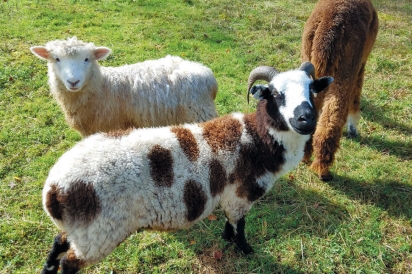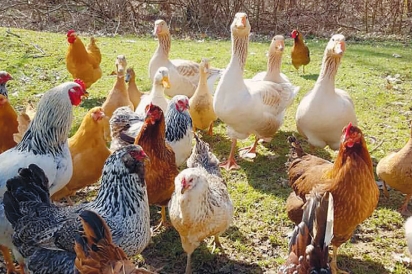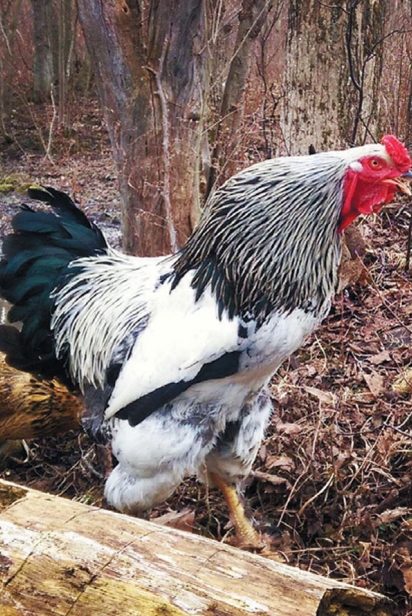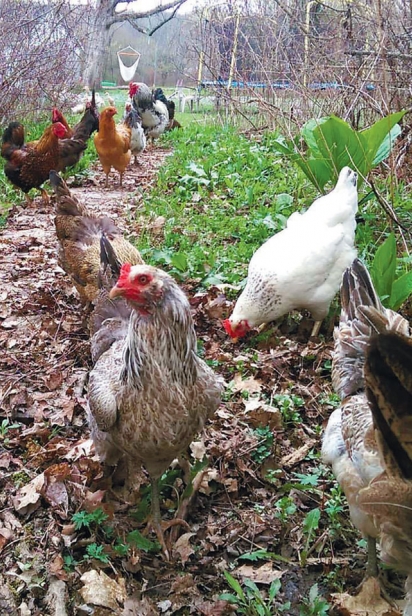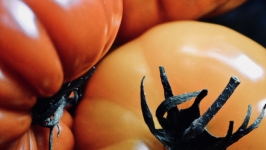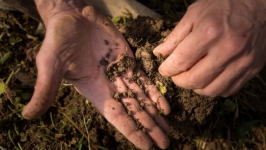Pride In Preservation
The benefits of heritage livestock breeds from pasture to purl to plate.
Musings from the Farm follows former city dweller Kate Hagel and her family as they dive into a new farm-folly life on Bally hope Farm in the beautiful rolling hills of Western New York.
When we moved to rural Western New York from the city of St. Louis, we purchased a 170-year-old farmhouse on 20 acres. I have always adored sheep, and that first long, cold winter converted my love for knitting into an obsession. It only made sense to raise some sheep. As I explored the different types of sheep and their uses (aren’t sheep just sheep and wool just wool?), I learned that the majority of the American sheep market is made up of a handful of breeds—all of which seemed too large and high-maintenance for my skill and comfort level. Luckily, I was introduced to the Livestock Conservancy and their work to preserve endangered heritage livestock breeds.
Heritage livestock breeds are very similar to heirloom fruits and vegetables. That store-bought strawberry may be “improved” so that it can survive the trip from California to New York, but it certainly hasn’t improved on the juicy flavor of the shorter shelf-lived heirloom strawberry.
Commercial livestock breeds are referred to as “improved” breeds: animals that have been bred so that they may convert feed to meat much more efficiently than traditional breeds. For example, improved breeds of poultry used in commercial chicken and turkey production reach full size in about six weeks (vs. five months) and produce excessive amounts of the breast meat that the public clamors for. The downside is that they are unable to reproduce naturally and they grow so quickly that their legs frequently cannot support them. Sheep, cows and pigs are improved in the same way to produce large amounts of wool and better feed-to-meat ratios.
Improving livestock breeds makes economic sense for farmers, since they are typically teetering on the razor edge of profit and loss. It also makes economic sense for the American public when stagnant incomes are not keeping up with inflation.
But what is the long-term impact on our agricultural system? When production breeds are limited to a few, the diverse genetic pool narrows and other breeds begin dying out. According to the Smithsonian Insider website, these endangered breeds play a vital role in food security through biodiversity, carrying valuable and irreplaceable traits such as resistance to disease and parasites, heat tolerance, mothering ability and foraging habits. Protecting the genetics and traits of these breeds will help ensure genetic diversity, which could protect the global food system.
Just as the USDA has a seed vault to preserve the biodiversity of plant life, especially food crops, the Livestock Conservancy began collecting embryos and semen when it discovered how quickly heritage breeds were dwindling. They have since handed it over to the USDA. The USDA collection does important work such as helping the Holstein dairy breed, which provides for many of the dairy products in the US. Holstein fertility and genetic diversity have declined. All of the Holstein A.I. sires (providers of semen for artificial insemination) currently trace back to just two bulls in the 1880s. The USDA was able to obtain frozen semen from two other lineages from the 1880s that existed as late as the 1960s. These will help revitalize the Holstein gene pool.
The Smithsonian and the SVF Foundation have also begun working on the preservation of endangered breeds through cryopreservation. Although the storage of genetic material is a useful technique, it cannot preserve the entire range of genetic diversity within even one breed, and cryopreserved embryos cannot adapt to environmental or biological changes as live animal populations can. Live herds are absolutely essential.
At a time when the future of our climate is uncertain, we don’t know what the needs will be of our livestock in 20 years. Improved breeds are crosses from pure heritage breeds to obtain desired traits. Without preserving the parent breeds, we will have nothing to cross. Heritage breeds are also a protection in cases of natural disaster or widespread catastrophic disease. That is where breed enthusiasts and hobby farmers play a vital role. Small herds have miraculously saved many critically endangered breeds.
When I was considering breeds of livestock to raise, I looked for breeds that were smaller and better suited to our climate, with the smarts to free-range and forage. I had often heard how stupid turkeys are—that they would pile on top of each other in a panic, at the least provocation, suffocating half the flock. That obviously wasn’t referring to heritage breeds. I’m always amazed when I walk out into my yard, where chickens are usually scratching about, when suddenly there is not a duck or chicken in sight because a rooster spotted a hawk, gave the alarm call and everyone ran for cover.
All of my birds are from the Livestock Conservancy’s priority list. In controlled environments where industrial farming takes place, poultry do not need to have the instincts for self-preservation or adaptations to various climates. Heritage breeds give me the option of choosing more parasite resistant, cold-hardy animals that can handle the wetland conditions.
What does all this mean to a consumer? It means food with actual flavor! Remember those two strawberries we were talking about? The heirloom strawberry is a delicious little package of juicy, sweet berry-ness. It’s the same with heritage meats. Those chickens that are ready for your freezer in five weeks? They’ve had no time to develop any flavor. That grocery store pork chop? Steak? Where’s the pork and beef flavor? Food produced slowly, walking around in the sun, eating what it’s supposed to eat acquires amazing flavor. It’s another reason that top chefs are demanding heritage meats.
For me, as a fiber artist, it means getting to choose from a whole slew of fibers intended for different purposes. Breedspecific yarns are another exciting trend! While you might not want yarn from my Jacob sheep’s fleece to knit a garment you’ll wear next to your skin, yarn from my Romeldale CVM sheep is ideal. Socks made from Romeldale yarn will wear holes much more quickly than socks made from Jacob yarn. Some wool felts more easily than others. Some is best for weaving rugs.
So, every time you choose heritage breed products from small farmers, not only are you getting a better-quality product and supporting a small farmer, you are doing your part to preserve our country’s rich heritage of agriculture and the biodiversity that is critical to our food security.
> Livestock Conservancy: livestockconservancy.org
> Smithsonian Conservation Biology Institute: nationalzoo.si.edu/conservation
> SVF Foundation: svffoundation.org
> USDA The Plant and Animal Genetic Resources Preservation: ars.usda.gov/plains-area/fort-collins-co/center-for-agricultural-resources-research/ plant-and-animal-genetic-resources-preservation



